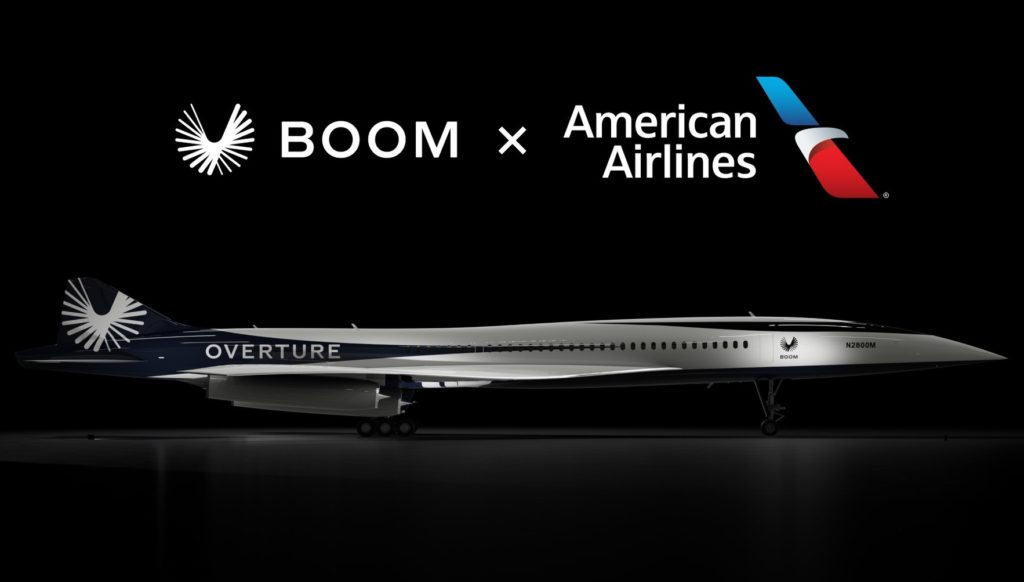Upon obtaining a commitment from United Airlines for 15 of its Overture jets, Boom Supersonic has secured yet another deal from a commercial aviation company. American Airlines has ” paid a non-refundable deposit on 20 Overture planes with the option to buy 40 more in the future. This is a huge development for a company that has yet to actually making an Overture aircraft.
Boom is in the process of building a manufacturing plant in North Carolina with a goal of producing the first Overture jet in 2025. This will be followed by the first flight in 2026. Upon completing the proper flight tests and certification, Boom believes that the Overture will be in trans-Atlantic commercial service by 2029.
Powering Supersonic Jets with 3D Printing
Because Boom has used Stratasys and VELO3D technologies to 3D print parts for its XB-1 demonstrator aircraft, a scaled-down version of the Overture, we’ll likely see the technology applied to the larger vehicle. The XB-1 included 21 3D printed parts, such as 12 Variable Bypass Valve engine and fuselage manifolds, four NACA ducts, and various louvers made using the Sapphire 3D printer from VELO3D.
If Boom manages to meet its goals, the Overture will be capable of flying up to Mach 1.7 (1,304 mph). This will make it possible to carry 65 to 80 passengers from Seattle to Tokyo in just six hours, rather than the more than 10 hours it takes with current technology.
The Economics of Commercial Air Travel
In the past, Boom suggested tickets on one of its planes could cost $5,000 per seat, but both United and American have not announced any pricing. This would seem like a high price for a sector that is notoriously unprofitable. One wonders how United and American could afford to purchase these planes when they already struggle with overbooking flights and pinch pennies by counting basic comforts as upgrades.
The biggest obstacle going forward will be the price of fuel. Given the fact that cheap oil has peaked, airlines will have to continually contend with volatile gas prices. Meanwhile, on the ground, passengers will face an increasingly expensive world in which the cost of goods goes up with the price of fuel. Ordinary people will not be able to afford a seat on the Overture.
“Supersonic travel will be an important part of our ability to deliver for our customers,” American’s chief financial officer, Derek Kerr.
United and American must be betting on future bailouts, given the U.S. government’s attitude toward their industries as too big to fail. They must also be betting on a niche of wealthy passengers that are not so rich that they’ll fly their own private jets but have enough to take supersonic flights.
“Sustainable Fuel”
Another new technology that airlines may be counting on to reduce the impact of peak oil is so-called “100 percent sustainable aviation fuel (SAF).” So far, Boom has successfully tested a fuel made with ~80% SAF from waste animal fats on its XB-1 engines. It has also partnered with startup Prometheus Fuels that aims to create clean fuel made from extracting CO2 from air and hydrogen from water. It will need a lot of this material, however, as supersonic jets may require up to five times more fuel per passenger than a standard jet.
Otherwise, it plans to “invest in a broad portfolio of high-impact, high-quality carbon offset solutions for residual emissions that cannot be mitigated.” That is where the “net” comes into play in its “net zero” emissions goals. Offsets are notoriously problematic because they allow companies to continue emitting while funding a reforestation or renewable energy project elsewhere in the world using math that may not add up ecologically.
“Passengers want flights that are faster, more convenient, more sustainable and that’s what Overture delivers,” Boom CEO Blake Scholl told CNBC. “Flight times can be as little as half as what we have today, and that works great in networks like American where we can fly Miami to London in less than five hours.”
Powerful Backers
Despite the long road ahead and the potential roadblocks, Boom has numerous powerful backers. In addition to United and American, the company has contracts and memorandum with Rolls-Royce and the U.S. Air Force. It also has funding and preorders from Virgin Group and Japan Airlines. It has additionally partnered with Northrup Grumman, Collins Aerospace, Safran, and Eaton.
With Northrup, the company will be developing specialty mission variants of the Overture for the U.S. Government and its allies. These may include rapid response planes designed for “quick-reaction surveillance and reconnaissance, command and control, as well as mobility and logistics missions such as emergency medical and troop transport.” Collins Aerospace, Eaton, and Safran Landing Systems are supplying systems for landing gears, fuel and inerting, air data, and ice protection.
With this in mind it seems that the Overture could actually take off.
